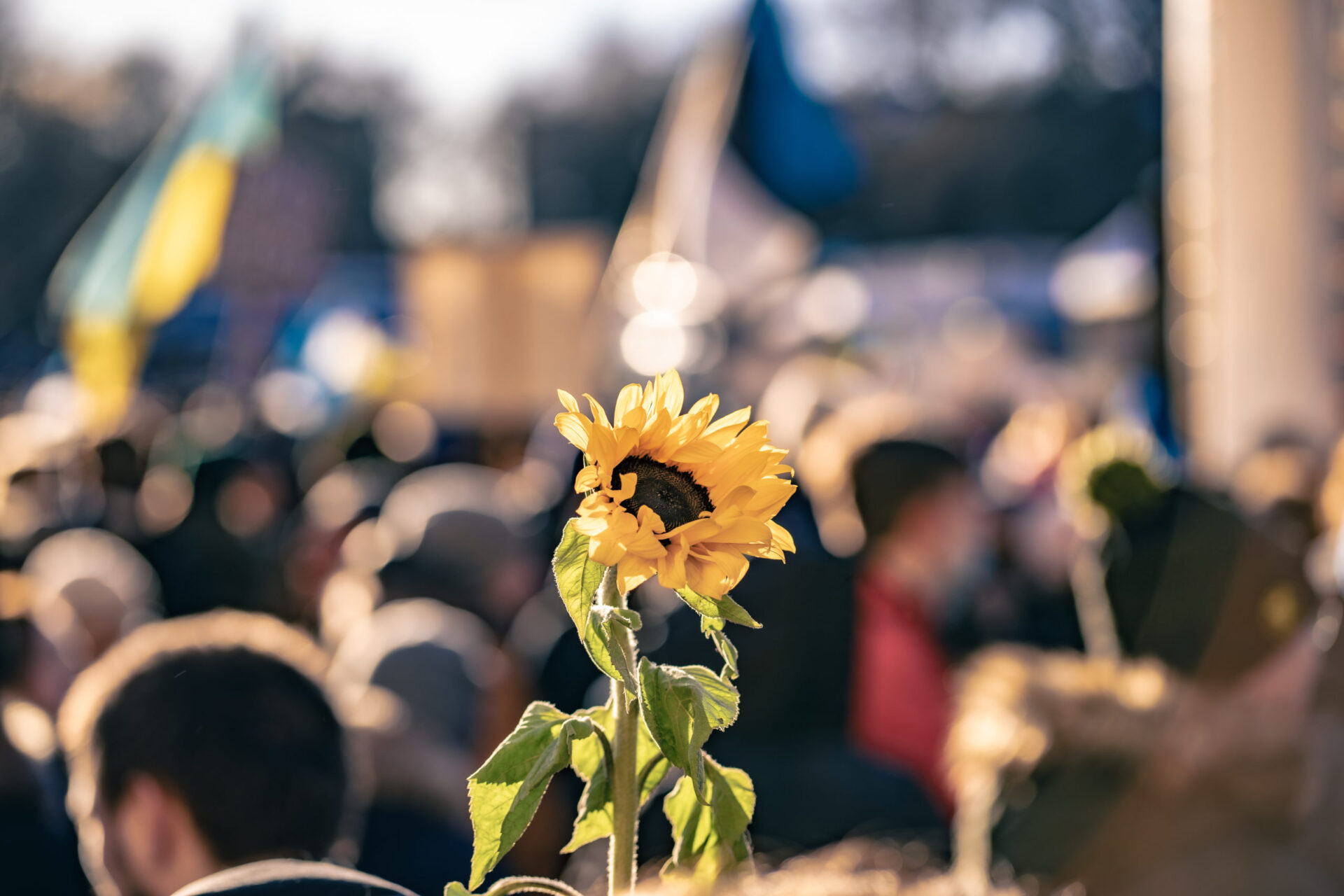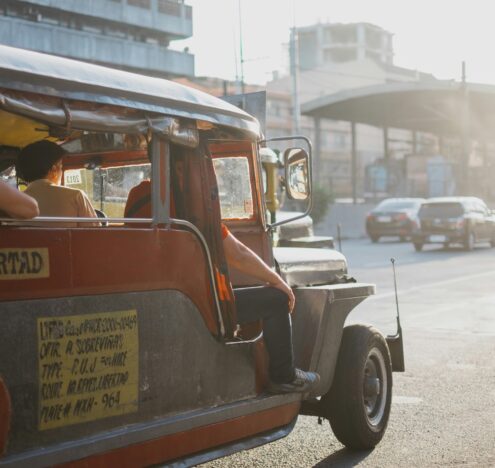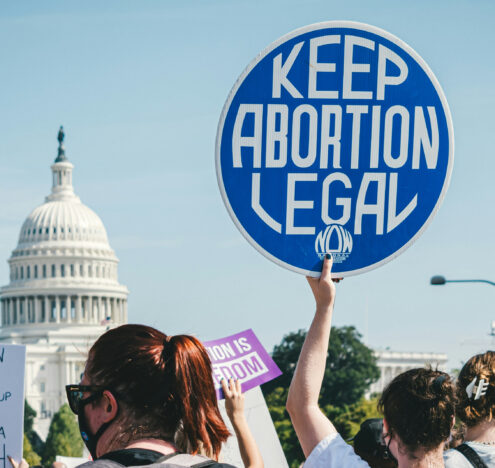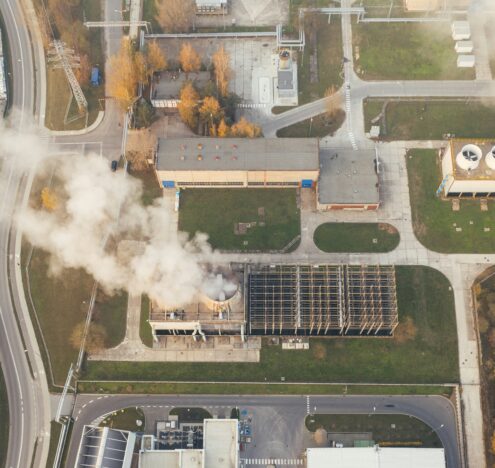The International Catalan Institute for Peace recently released a profound, provocative, and potentially conflict-changing report on the broad range and deep impact of courageous Ukrainian nonviolent resistance and non-cooperation to the Russian invasion. The report examines civilian nonviolent resistance activity from February through June 2022, intending to identify their characteristics and impacts.
The report’s research involved over 55 interviews, identified over 235 nonviolent actions, and found that nonviolent resistance has hindered some of the Russian authorities’ long-term military and political goals, such as the institutionalization of military occupation and repression in the occupied territories. Nonviolent resistance has also protected many civilians, undermined the Russian narrative, built community resilience, and strengthened local governance. These efforts present the US government with a critical opportunity to support Ukrainians in concrete, practical ways to help shift power dynamics on the ground.
WHAT NONVIOLENT RESISTANCE LOOKS LIKE IN UKRAINE
Some examples of courageous nonviolent action include Ukrainians blocking convoys and tanks and standing their ground even with warning shots being fired in multiple towns. In Berdyansk and Kulykіvka, people organized peace rallies and convinced the Russian military to get out. Hundreds protested the abduction of a mayor, and there have been protests and refusals to shift to the rouble in Kherson to resist becoming a breakaway state. Ukrainians have also fraternized with Russian soldiers to lower their morale and stimulate defections. Ukrainians have courageously evacuated many people from dangerous areas. For example, the Ukrainian League of Mediators is helping address increasing polarization within Ukrainian families and communities to minimize the violence.
There is a significant opportunity to deepen and refine our solidarity with the Ukrainian people based on the direct requests of Ukrainian peacebuilders and nonviolent activists.
Another report by the Peace, Action, Training and Research Institute of Romania includes recent examples of non-cooperation by ordinary Ukrainians, such as farmers refusing to sell grain to Russian forces and provide aid to Russian troops. Ukrainians have also set up alternative administrative centers and hid activists and local government staff like officials, administrative officers, and school directors. Ukrainian educators have also rejected Russian standards for educational programs, maintaining their own standards.
Working to undermine support for the war in Russia is a critical strategic initiative. For instance, a project proposal by regional experts in Kyiv working with Nonviolence International, a nongovernmental organization, is mobilizing Russians outside Russia to communicate strategic anti-war messages to Russian civil society. In addition, strategic initiatives to generate defections from the Russian military and support those who have already left to avoid conscription are critical opportunities for US foreign policy.
I traveled to Kyiv at the end of May 2022 as part of an interfaith delegation. At the end of August, I joined the Peace, Action, Training and Research Institute of Romania, based in Romania, on a trip to Ukraine to meet with leading nonviolent activists and peacebuilders. They had meetings to increase their collaboration and improve their strategies. We heard their stories of resistance and their need for support and resources. Many of them went to Brussels with other international partners to advocate for more funding to support such activities, and asked for similar advocacy to the US government.
The Ukrainians we met asked that we call on key leaders, such as members of Congress and the White House, to act in three ways. First, by sharing their examples of nonviolent resistance. Second, by advocating to the Ukrainian government and other governments to support them by developing a nonviolent strategy of non-cooperation to the occupation. And third, by providing financial, strategic campaign training, and technology/digital security resources. Finally, but most pointedly, they asked that they not be left alone.
One of the conflict monitors we met in Kharkiv is resourced by the UN and said that in the occupied areas where nonviolent resistance was the primary method, the Ukrainians faced less repression in response to this kind of resistance. In the regions with violent resistance, the Ukrainians faced more repression in response to their resistance. The Nonviolent Peaceforce has also begun programming in Mykolaiv and Kharkiv in Ukraine. They are providing unarmed civilian protection and accompaniment, especially to the elderly, disabled, children, etc. US foreign policy could directly support and scale up such existing programs and proven methodologies.
HEARING THE PEACEBUILDERS AND NONVIOLENT ACTIVISTS
In a groundbreaking book, “Why Civil Resistance Works,” researchers analyzed more than 300 contemporary conflicts and showed that nonviolent resistance is twice as effective as violent resistance and at least ten times more likely to lead to durable democracy, including against authoritarians. Erica Chenoweth and Maria J. Stephan’s research included campaigns with specific objectives, such as resisting occupation or seeking self-determination. These are both relevant aspects of the broader situation and protracted conflict in Ukraine, as areas of Ukraine have been under occupation and the country seeks to defend its self-determination as a nation.
Suppose US foreign policy leans into the work of supporting mass organized coalitions of nonviolent resistance. In that case, we are more likely to cultivate habits, both in persons and societies, that correspond to more durable democracies, cooperative security, and human flourishing. Such habits include broader participation in politics and society, consensus-making, broad coalition-building, courageous risk-taking, engaging in conflict constructively, humanization, creativity, empathy, and compassion.
US foreign policy has long been involved in Ukraine with questionable and shifting objectives. Yet, there is a significant opportunity to deepen and refine our solidarity with the Ukrainian people based on the direct requests of these Ukrainian peacebuilders and nonviolent activists. On their behalf, I ask Congress, congressional staff, and the White House to share this report and these stories with key decision-makers.
It is time to work with the Ukrainian government to develop a coherent non-cooperation and nonviolent resistance strategy that will support such Ukrainian activists and peacebuilders. It is also time for US leadership to invest significant financial resources in training, digital security, and material assistance for these peacebuilders and nonviolent activists in any future Ukrainian aid packages as we try to create conditions for a sustainable, just peace.
Eli McCarthy is a Professor of Justice and Peace Studies at Georgetown University and Co-Founder/Director of the DC Peace Team.





















